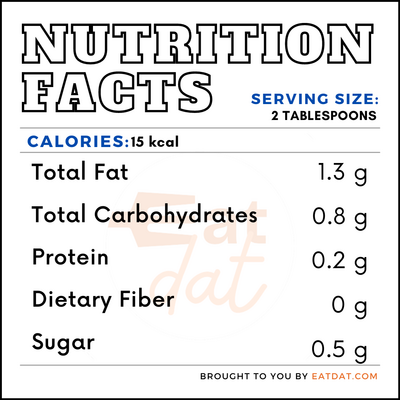
Whipped Cream
What is Whipped Cream?
Whipped cream is a cream produced by beating heavy cream until it is fluffy and light. It is commonly flavored with vanilla and confectioner’s sugar. Whipped cream is a sweet, premade confection that has already been whipped and can be purchased in stores for immediate use.
- This is different from whipping cream, which is heavy cream that has not yet been whipped.
- In the kitchen, whipped cream can be used in desserts, coffee, and even savory dishes.
The top three most popular canned brands are:
- Natural by Nature Sweetened
- Cabot Sweetened
- Isigny Ste Mère Crème à la Vanille de Madagascar
Origin of whipped cream
The first known reference to whipped cream came in 1661 when Vatel, a French chef, produced a variation of this cream with sugar to honor King Louis the XIV. Over the centuries, chefs have included other flavors like vanilla and orange to this cream. In the 1930s, British scientists started creating aeration systems that work with pressurized nitrous oxide to create instant whipped cream. After World War II, American industries also started establishing dispensers. However, most of the companies closed down due to low-quality results.
Nutrition
In 2 tablespoons (6g) of whipped cream, there are:

Heavy whipping cream, which is used to make this, has several health benefits. This cream contains an array of important vitamins and minerals. Also, it can be capable of reducing high blood pressure. However, heavy whipping cream can have a few side effects. First of all, it has a large number of calories compared to whipped cream. Also, lactose-intolerant people cannot consume heavy cream.
Commercial production
The steps in the commercial production are:
- Pasteurization of milk
- Cream separation
- Standardization
- Pasteurization
- Cooling and wrapping
- Sterilization
- Rebodying
- Crystallization
The global whipping cream market was valued at $5.98 billion in 2018. It has been estimated that this market would grow at a growth rate of 8.1% between 2015 and 2019. In 2015, the top five exporters of sweetened and concentrated milk and cream were New Zealand, the United States, Germany, the Netherlands, and France.
Application
Whipped cream is easy to make. Here are some helpful tips to follow:
- If you start with two cups of heavy cream, that will produce four cups of whipped cream. The implication is that this cream doubles in size.
- Keep the heavy cream chilled before use. The mixing bowl and other kitchen utensils should be refrigerated, as well. This low temperature will make the whipping process faster.
- You can also add a little sweetener and vanilla. However, heavy cream should be the main ingredient.
- As you whip the heavy cream, you will notice how it changes in texture. The texture can be separated into three categories: soft peaks, medium peaks, and stiff peaks.
Soft peaks have light swirl marks and look like melted ice cream. Medium peaks have swirl marks that are closer to each other. Stiff peaks have significantly tight swirl marks.
To make this first mix the cream and other ingredients in a chilled bowl. Then, put the mixture into the blender and set it to a low speed. After that, gradually increase the speed and look for peaks to achieve the desired consistency.
Homemade whipped cream can last for 2-3 days in the fridge. If stored in the freezer, this creamy food can last 2-3 months. Should your cream’s consistency change and the water begin to separate, it is time to discard it.
Whipped cream recipes
This cream is an integral part of many sweet dishes. Five recipes to try include:
- Whipping Cream Pound Cake
- Cookies and Cream Smoothie
- Peanut Butter Cookie Lasagna
- Perfect Whipped Cream
- Chestnut Pudding with Nutmeg
FDA regulation
The Food and Drug Administration has standards of identity for light whipping cream and heavy cream. Light whipping cream is cream that contains greater than 30% and less than 36% milkfat. On the other hand, heavy cream is cream that has more than 36% milkfat. Both types of cream can be pasteurized or ultra-pasteurized and may be homogenized. The organization is in charge of the production, processing, and labeling of both types of cream.
References
Shoemaker, SaVanna. “Heavy Whipping Cream: Nutrition, Uses, Benefits, and Downsides.” Healthline media, Healthline, 27 May 2019, https://www.healthline.com/nutrition/heavy-whipping-cream
“CFR – Code of Federal Regulations, Title 21.” accessdata.fda.gov, U.S Food & Drug Administration, 1 Apr. 2019, www.accessdata.fda.gov/scripts/cdrh/cfdocs/cfcfr/CFRSearch.cfm?fr=131.157.
